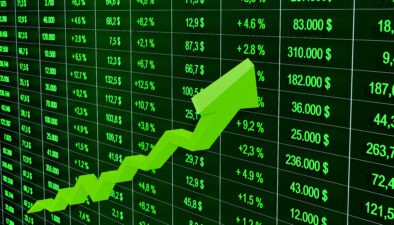As interest rates have gone up since 2022, investors have rotated a good portion of money from risky assets like stocks into safer assets like bonds, guaranteed investment certificates (GICs), and cash-like investments. These lower-risk investments offer better protection of principal and some even offer decent income in a higher rate environment. For example, the best one-year GIC rate is about 5.75% and it guarantees the safety of your principal.
History tells us that we could make more money from stocks. At writing, the Canadian stock market, using iShares S&P/TSX 60 Index ETF as a proxy, offers a cash distribution yield of about 3.3%. If you could get double that yield through a dividend of 6.6% (or higher), would you go for it? Is it safe? What’s the catch?
The quick answer is that a higher dividend yield suggests your money will be exposed to greater risk or the underlying company has slower growth (and therefore investors are expected to get a bigger portion of total returns from the dividend).
Here are some big dividend stocks that offer juicier yields than 6.6% as examples.
Enbridge
Enbridge (TSX:ENB) stock has increased its dividend for about 27 consecutive years with no dividend cuts in at least the past 50 years. Because of large non-cash expenses, the company uses a payout ratio based on distributable cash flow (instead of earnings) as a gauge for its dividend safety.
Enbridge stock’s dividend appears to be safe. Specifically, the large North American energy infrastructure company targets a payout ratio of 60-70% of its distributable cash flow (DCF). Surely enough, so far, the company has reported results for the first half of the year, which equates to a sustainable payout ratio of about 63% based on the DCF.
Notably, as interest rates have gone up and the company naturally has large debt levels on its balance sheet, the dividend stock may increase its dividend by about 3% per year through 2025. At $44.55 per share at writing, it offers a massive dividend yield of almost 8%. Analysts believe the stock is worth around $55.23, which represents a discount of roughly 19%.
Bank of Nova Scotia
Like Enbridge, Bank of Nova Scotia (TSX:BNS) stock has not cut its dividend in at least the past 50 years. So, the big Canadian bank stock is also a good candidate for income that more than doubles the market’s return.
At $59.90 per share, BNS stock offers an enticing dividend yield of almost 7.1%. Normally, the bank maintains a payout ratio that’s below 50% of its adjusted earnings. However, during tougher economic times, its payout ratio is known to stretch.
For example, around the Global Financial Crisis, its payout ratio was about 59% in 2009 and approximately 67% in the 2020 pandemic year. Its trailing-12-month payout ratio is almost 70% of its net income available to common shareholders. The bank also has a treasure chest of retained earnings that could act as a buffer to protect its dividends.
Algonquin
Algonquin Power & Utilities (TSX:AQN) offers a dividend yield of 7.5% at writing. Notably, the stock cut its dividend by 40% earlier this year, but the stock was already falling before the cut occurred, which indicates the market sensed trouble.
The utility is more leveraged than its larger peers with better credit ratings. So, it’s experiencing more challenges in a higher interest rate environment. As the cost of capital and the cost of servicing debt increased, projects became unattractive. In fact, the company is even in the midst of selling its renewable power portfolio. At this level, its payout ratio of about 79% of adjusted earnings is, at best, sustainable.
Conclusion
Whether a high yield from a dividend stock is safe or not requires extensive research. Some things you can investigate are the earnings or cash flow history, dividend history, payout ratio, and retained earnings – the opposite of which is an accumulated deficit, which may be a red flag. The current macro environment is another indicator. For example, in general, rising interest rates are a dampener of economic growth.








